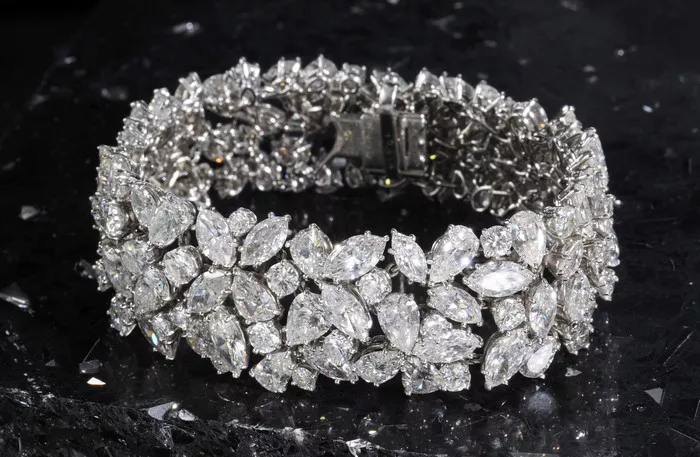Bracelets, those timeless adornments adorning wrists across cultures and eras, hold a mystique that transcends fashion trends. They are not merely accessories but symbols of identity, culture, and status. But who can lay claim to the invention of such a ubiquitous item? The answer is as intricate and diverse as the bracelets themselves.
Ancient Origins: The Dawn of Bracelets
To uncover the origins of bracelets, one must journey back through the annals of human history. The earliest evidence of bracelets dates back tens of thousands of years, to the Paleolithic era. In these ancient times, bracelets were crafted from natural materials like bone, shells, and wood, serving both decorative and functional purposes.
Among the earliest civilizations known to have embraced bracelets were the Ancient Egyptians. Renowned for their mastery of jewelry-making, the Egyptians adorned themselves with intricately designed bracelets made from gold, silver, and precious gemstones. These bracelets symbolized wealth, power, and protection, often featuring motifs inspired by religious beliefs and mythology.
Cultural Contributions: Bracelets Around the World
As civilizations flourished and societies evolved, bracelets became integral elements of cultural expression across the globe. In Asia, civilizations such as the Indus Valley and Mesopotamia showcased their craftsmanship through bracelets made from metals like copper and bronze. These artifacts not only adorned the wrists but also conveyed social status and religious affiliations.
In Africa, bracelets held profound cultural significance, with different tribes and communities utilizing a diverse array of materials and designs. From the intricate beadwork of the Maasai tribe to the brass bangles of the Fulani people, bracelets served as markers of identity, tradition, and rites of passage.
The influence of bracelets extended to the Americas, where indigenous cultures like the Aztecs and the Incas crafted ornate pieces from gold, silver, and semiprecious stones. These bracelets, often imbued with spiritual meaning, adorned the wrists of rulers, warriors, and shamans, connecting wearers to their ancestral heritage and the natural world.
Innovation and Evolution: Advancements in Bracelet Design
Throughout history, the invention of bracelets evolved alongside advancements in technology, trade, and artistic expression. The Middle Ages witnessed the rise of European craftsmanship, with artisans creating bracelets adorned with intricate filigree, enamel, and gemstones. These luxurious adornments adorned the wrists of nobility, reflecting the opulence and refinement of the era.
The Renaissance period ushered in a resurgence of interest in classical art and culture, inspiring jewelers to incorporate motifs from ancient civilizations into their bracelet designs. Renaissance bracelets often featured motifs such as cameos, intaglios, and motifs inspired by Greco-Roman mythology, evoking a sense of timeless elegance and sophistication.
The Industrial Revolution marked a pivotal moment in the history of bracelet-making, as mass production techniques enabled the widespread availability of bracelets to people of all social classes. With the advent of mechanized manufacturing processes, bracelets became more affordable and accessible, allowing individuals to express their personal style and tastes.
Modern Innovations: From Traditional to Contemporary
In the modern era, bracelets continue to evolve, reflecting changing trends, technologies, and cultural influences. From the sleek minimalism of Art Deco designs to the bold experimentation of the Modernist movement, bracelet design has embraced a diversity of styles, materials, and aesthetics.
Contemporary designers draw inspiration from a myriad of sources, incorporating elements from nature, architecture, and pop culture into their bracelet creations. From eco-friendly materials like recycled metals and sustainable wood to cutting-edge technologies such as 3D printing and digital fabrication, modern bracelets push the boundaries of innovation and creativity.
Conclusion
In the vast tapestry of human history, bracelets stand as enduring symbols of creativity, craftsmanship, and cultural heritage. From their humble origins in ancient times to their evolution into modern-day fashion statements, bracelets continue to captivate and inspire us with their beauty and significance.
While the question of who invented bracelets may remain shrouded in the mists of time, what is clear is that these timeless adornments have left an indelible mark on human civilization. Whether worn as talismans of protection, expressions of personal style, or symbols of social status, bracelets will forever hold a special place in the hearts and minds of people around the world.
FAQs
1. What is the history of wearing bracelets?
Bracelets have a rich history dating back thousands of years. They were initially worn for both decorative and functional purposes, with evidence of their existence found in ancient civilizations like Egypt, Mesopotamia, and China. Throughout history, bracelets have been crafted from various materials such as precious metals, gemstones, shells, and even bones. Their designs and significance have evolved over time, reflecting cultural beliefs, social status, and fashion trends.
2. What do bracelets symbolize?
Bracelets carry diverse symbolic meanings across different cultures and contexts. They can symbolize friendship, love, protection, spirituality, or even signify membership in a group or organization. In some cultures, specific bracelet designs are imbued with religious or spiritual significance, serving as talismans or amulets believed to bring luck or ward off evil.
3. What is the oldest bracelet?
The oldest known bracelet dates back to ancient Egypt, around 5000 BCE. It was discovered in the tomb of a mummified woman, crafted from a combination of shells and beads.
4. Who first invented jewelry?
The exact origins of jewelry are difficult to pinpoint, as it predates recorded history. However, archaeological findings suggest that early humans likely adorned themselves with natural materials like shells, bones, and feathers for adornment and self-expression.
5. Why do Chinese wear bracelets?
In Chinese culture, bracelets hold various meanings and are worn for different purposes. They are often given as gifts to symbolize good luck, prosperity, and protection. Some bracelets, such as jade bangles, are believed to have healing properties and promote harmony and balance within the body according to traditional Chinese medicine. Additionally, wearing bracelets can be a fashion statement and a way to showcase personal style and taste.

